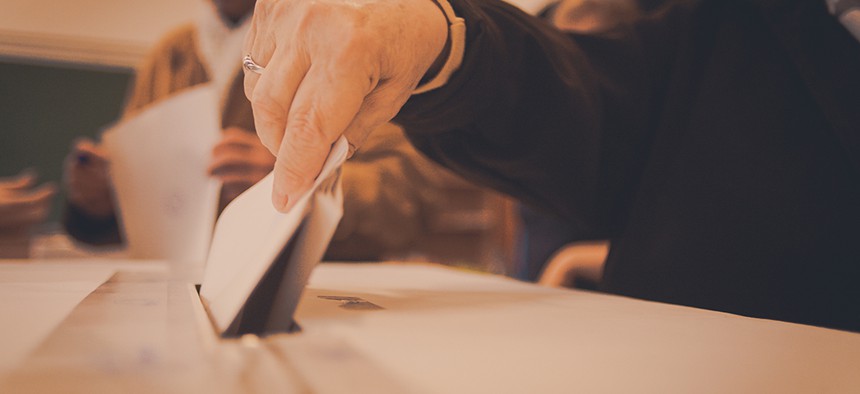In the aftermath of the 2016 presidential election, many people – including President Donald Trump – wondered why the polls were wrong. Of course, some argued that the national polls weren’t wrong, because Hillary Clinton did win the popular vote by around 2 percent of the vote, as many outlets predicted.
Nonetheless, the stigma against surveying voters seeped into the collective American psyche: You can’t trust the polls.
Tuesday’s congressional primaries are unlikely to assuage poll-averse New York voters. Although there wasn’t much local polling for these congressional races, the polls that were available did not seem to have much bearing on the actual results.
In the 11th Congressional District, an April poll by the Democratic Congressional Campaign Committee showed that Michael Grimm was ahead of incumbent Rep. Dan Donovan in the Republican primary by 10 percentage points. A poll from NY1/Siena College released in early June again showed that Grimm had a 10-point lead. However, Donovan won the race in a blowout, with 64 percent of the vote to Grimm’s 36 percent.
The disparity between the poll results and the election results may have to do with the polls’ timing and origin. The first poll, conducted months before the election, was conducted by the DCCC. Grimm is a convicted felon with a fiery personality, and many in the Democratic Party believed that the seat currently held by Donovan would be considerably more winnable if Grimm were the Republican nominee.
The NY1/Siena poll was conducted three weeks before the race, on the from of May 29 through June 1. On May 30, midway through the poll, President Donald Trump endorsed Donovan. Trump is very popular on Staten Island, where he won with 56 percent of the vote in 2016. The NY1/Siena poll also showed that 82 percent of likely Republican voters in the district were favorable of the president. Steve Greenberg, a pollster for Siena College, said that the poll was demonstrated the opinion of likely Republican voters three weeks before the election, but that it changed over time.
“A poll is nothing more than a snapshot in time,” Greenberg said. “Go back to what we saw in that poll: Trump was loved, and voters said that they thought Grimm would do a better job of working with the president than Donovan. But the president came out and said, ‘My guy is Donovan.”
Two debates were also held after the poll was released. Trump’s endorsement plus the continuing campaign efforts likely had an effect on voters’ decisions in the remaining three weeks of the race.
A Spectrum News/Siena College poll for the Democratic primary in the 24th Congressional District, conducted two weeks before the election, showed Juanita Perez-Williams up ten percentage points above Dana Balter. Perez Williams, the former candidate for mayor in Syracuse, had the backing of the DCCC. Balter was supported by Democratic county leaders.
Balter drubbed Perez Williams in the election, earning 62 percent of the vote to Perez Williams’ 37 percent.
The poll was conducted before Perez Williams and Balter participated in their only televised debate. Perez Williams also may have had the name recognition from her mayoral run, but she didn’t have the infrastructure. She jumped into the race two weeks before petitioning for the primary closed. Meanwhile, Balter ran more of a grassroots campaign, that began as part of a group of left-leaning activists who were trying to speak to Rep. John Katko, who she now will face in November.
“There was a lot of campaigning still to do where you had candidates who were both unknown to large swaths of the electorate,” Greenberg said, adding that the two weeks between the poll and the election allowed voters to make decisions about their candidates.
Voter turnout was also higher in 2018 than in 2016 congressional primaries, with 25 percent of Democrats in the district voting this year, as compared to 9 percent two years ago.


